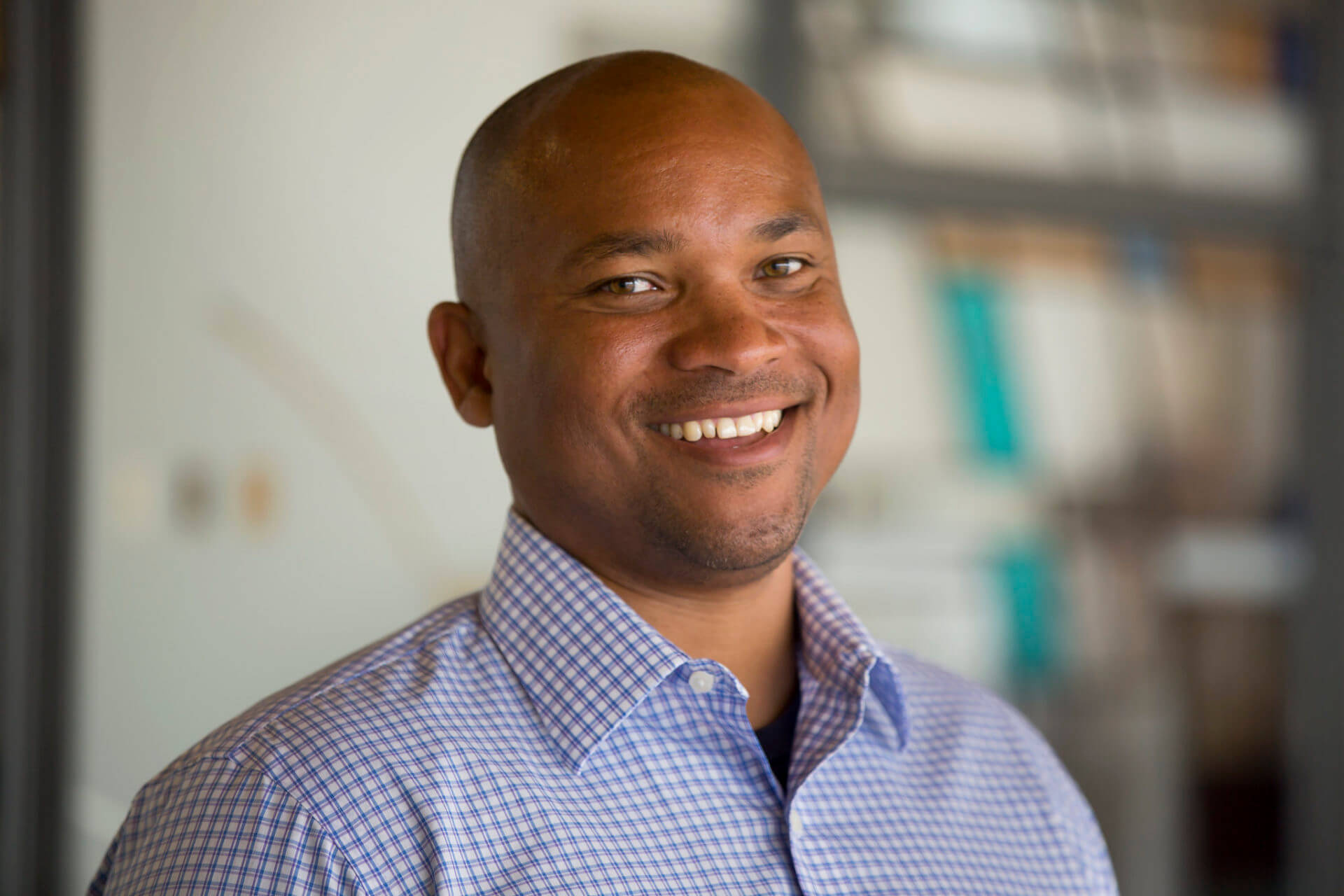Who Trains the Robots?

Odest Chadwicke “Chad” Jenkins, Ph.D. CS ’03, has long had a commitment to leveraging robotics to benefit society in a real and tangible way.
In 2013, Jenkins – then at Brown University – and his team created a system that allowed a paralyzed former Silicon Valley CFO, Henry Evans, to fly a drone with a mounted camera by simply moving his head. Thanks to Jenkins’ work, Evans could once again stroll a garden, visit a campus or even give a TEDx Talk, appearing virtually on stage with Jenkins through a telepresence robot on wheels.
“What I do is really trying to think about how robots can help improve our society,” said Jenkins, a pioneer in teaching robots by demonstration and whose research also focuses on mobile manipulation and robot perception.
After earning his master’s degree in computer graphics from Georgia Tech, Jenkins
decided he wanted to pursue a doctorate. Winning an All-University Predoctoral Fellowship, he enrolled at USC Viterbi to study under the auspices Maja Matarić, a renowned roboticist and the Chan Soon-Shiong Distinguished Professor of Computer Science, Neuroscience, and Pediatrics.
“We kept talking and arrived at an area of mutual interest: robot learning from demonstration,” Matarić said. “Back then, it was a very new field. Now, it is very established, and a key part of enabling complex robots to behave safely and efficiently. Chad contributed one of the early seminal dissertations to that field.”
Jenkins now a professor at the University of Michigan and a 2019 fellow of the American Association for the Advancement of Science (AAAS), credits his time USC Viterbi with giving him the foundation for his distinguished career.
“I went from being a geeky kid who didn’t really know much to being a real researcher,” he said. “I am incredibly grateful for the opportunity given to me.”
Since then, Jenkins has gone on to become a pioneer in the field of teaching robots through human demonstration, which improves human-robotic interactions. More recently, he has become a leader in the movement for equity for Black men and women in the computing community.
All the while, Jenkins has placed his faith in robots helping people for a better tomorrow.
As an assistant professor at Brown, Jenkins aimed to program robots so they could learn through mimicry and repetition. He and his team taught a robot to do the Cabbage Patch and other dances from the 1990s just by watching people. In 2011 “Popular Science” named Jenkins a “Brilliant 10,” calling him “The Robot Trainer.”
More recently, his robots have learned to perform various household tasks, such as organizing shelves and setting trays, after being shown how. Previously, researchers who wanted robots to emulate human behavior would literally have to guide their actions, say move a robot’s arm to swing a tennis racket — a cumbersome and far more technologically challenging endeavor.
Jenkins describes his research as taking place “at the intersection of robotics and AI.” Indeed, a plethora of technologies working together make so-called learning from demonstration, or LfD, possible. They include machine learning, computer vision, and human factors.
He believes his robot LfD work could make a difference.
“You could have a robot do something that nobody’s ever thought of before,” Jenkins said. “But instead of having to learn computer programming, become a computer scientist and learn AI, you could just show the robot what you want it to do, and then it will be able to adapt to your new situation or new task. Or you could simply have a robot build a birdhouse with you, put away dishes or clean up a bed pan in a nursing home.”
Throughout his academic career, Jenkins has made democratizing knowledge a priority. That’s why he and his team developed the now widely used “rosbridge” protocol that makes it relatively easy for developers to program a wide range of diverse robots, especially compared to specialized code.
While Jenkins has placed his faith in robots helping people for a better tomorrow, he has also become a leader in the movement for equity for Black men and women in the computing community. He recently helped write an open letter, posted on the BlackInComputing.org website, calling for equal opportunity for and greater representation of Blacks in the computing ecosystem. The time to act is now.
“In AI and robotics, we have been operating in startup mode for a long time. We just try to put the technology in place,” Jenkins said. “But now we’re actually maturing to the point where we have to be more responsible. We have to grow up.”



